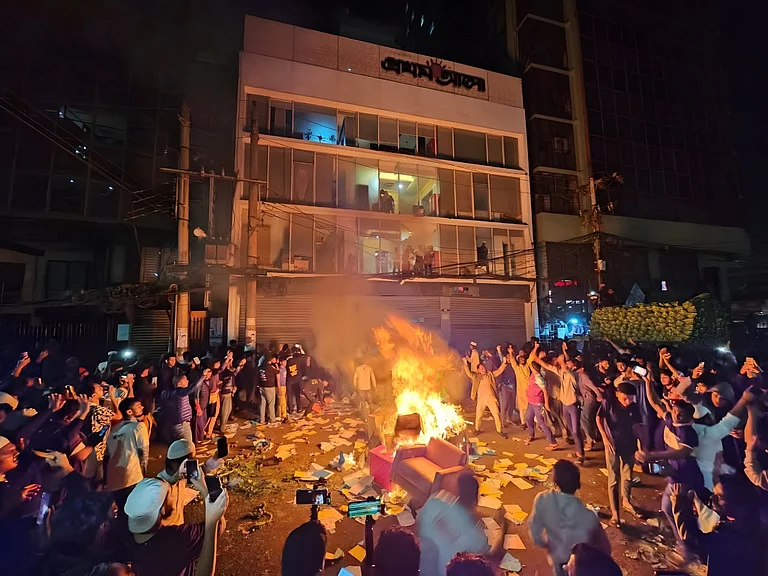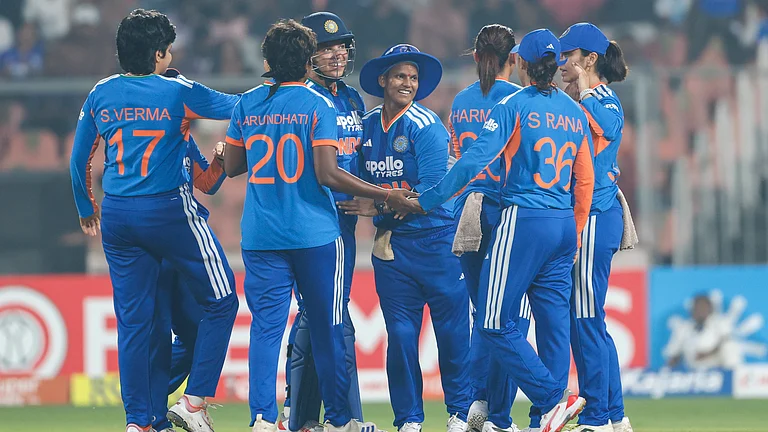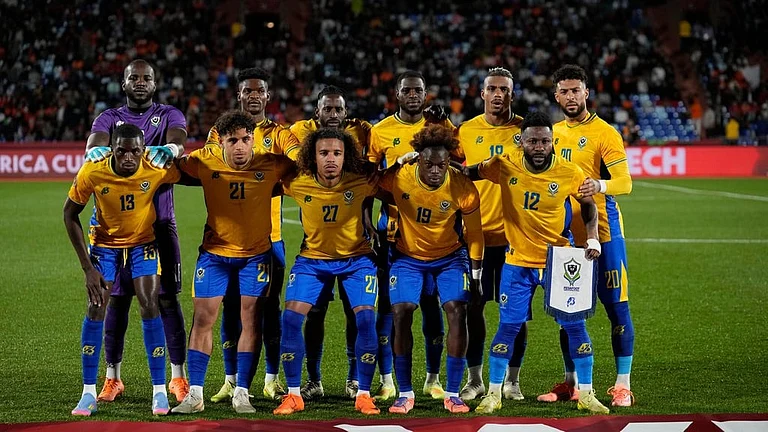"We had become a divided nation filled with ethnic hatred and bitterness, a nation at war destroyingitself and its people."
Prime minister Wickremasinghe
at the Tokyo meet.
Despite the absence of the LTTE, the Tokyo aid Conference held between 9 and 10 June,2003 at Tokyo has beentermed as an unprecedented success with donors pledging 4.5 billion dollars over a period of four years. Itwas unprecedented in one sense that a large number of countries and institutions were represented. But theabsence of LTTE in the conference and their quick denunciation of the declaration as not binding on them hascertainly dampened the enthusiasm shown in the conference.
The Conference on Reconstruction and Rehabilitation was attended by representatives of 51 countries and 21international organisations including 12 donor institutions and Japan which is the largest donor to Sri Lankapledged one billion dollars. It became clear after the conference that Japan would have an active role inestablishing modalities for monitoring and reviewing the progress towards peace and in the distribution of theaid package.
The Tokyo Declaration
At the end of the conference a document, "Tokyo declaration on reconstruction and development of SriLanka " was issued. Some of the highlights of the document are:
1. The declaration made mention of three documents prepared by the Sri Lankan government on the eve of thetalks. One was "Regaining Sri Lanka" for the whole country, another on "Needs assessment"of the North east and separately of the conflict related districts adjacent to the North and East and a"Bridging Document" which links the Needs Assessments and the Regaining Sri Lanka.
2. It called for manifest commitment by both Government of Sri Lanka and the LTTE to further the peace processfor provision of international assistance to the conflict affected areas of North and East.
3. In a significant move, the declaration has linked donor support to the peace process. The internationalcommunity appeared to be getting fully involved in the development of a road map ( a fashionable term thesedays ) with milestones to indicate the path towards a final political solution. Some of the points likeparticipation of a Muslim delegation, rehabilitation of combatants, gender equity, under age recruitment bythe LTTE, phased and verifiable de-escalation etc. are political in nature that should have been left to thetwo warring sides to decide.
4. As said before, Japan is now officially involved fully. The document goes on to say that " with regardto the position of Norway as the facilitator, Japan in cooperation with the United States and the EuropeanUnion, will undertake necessary consultations to establish the modalities . . . as early as possible. ";
In pledging a large amount, the hope is that for the sake of rehabilitation and reconstruction, the processof political settlement will be quickened. In this, the assessment of donor countries including USAwhich was represented by Richard Armitage may go wrong.
On the government side, despite all the praise showered by the Prime Minister in the opening remarks in theconference on President Chandrika who, he said, contributed significantly to the peace process, the feudbetween the two would continue. The strain between the two gives no confidence to the well wishers of peaceand even to the LTTE.
Balasingham made it clear in his last letter that a permanent political solution through a radicalconstitutional transformation is not feasible under the current unstable political environment created by the"dual, ferociously opposed power centres in Colombo."
While preparations for the aid conference were going on, Chandrika’s party was finalising the MOU betweenher party and the JVP for an electoral alliance, meant to regain power after toppling the UNP government ofWickremasinghe. On the question of handing over interim administration, she made an avoidable statement thatan interim administration should not be given to a "terrorist group" when her own government has de-proscribedLTTE before the talks.
The other hope is that with the reconstruction in place in the north and east, the LTTE will be moreamenable to a softer approach towards settlement and that the people may themselves demand of LTTE to do so.The people of north and east admire LTTE but also fear them. They will be in no position to influence LTTE togive up any of their avowed political goals. The only occasion when the people stood up was when the Jaffnaresidents were all asked to move over to Vanni during the war when the Sri Lankan army occupied JaffnaPeninsula. It is too much to expect the people to influence the LTTE.
The real problem that has arisen is the demand of LTTE to hand them over the interim administration of thenorth east. Though this issue was raised at the beginning of the talks, the LTTE for tactical reasons did notpress for a decision.. The reasons given for raising this issue now according to them were 1. With dual powerstructure in Colombo, there is no immediate permanent settlement and 2. The institutions created in the sixrounds of talks have failed to function effectively to bring relief to thousands of refugees and internallydisplaced persons in the northeast.
We have pointed out before that LTTE’s objective is to take full control of Jaffna now, somethingthey failed to achieve by military means. Prabakaran’s demand for an "innovative (whatever the termmeans) interim administrative structure vested with adequate authority and legal status with greaterparticipation of the LTTE in both decision making and delivery of the tasks of rebuilding the war damagedeconomy and restoring normalcy in Tamil speaking homeland" is precisely for this objective. This wouldamount to a structure outside the Sri Lankan constitution which the government is now in no position to grant.
Nowhere has the LTTE leadership explained in detail of what they want of Jaffna except in general terms ofan innovative structure of administration One thing is clear- they will not allow any non LTTE member oractivist to have any role in running the north east as this would be against their stated position that LTTEand LTTE alone is the sole representative of the Tamils..
The Sri Lankan government tried in vain in proposing a development structure consisting of a three layeredstructure with an Apex body at the top level, a management board at the middle level with a Secretariat and athird level consisting of existing government machinery. The objective was to "expedite efficientimplementation of programmes and projects relating to relief, rehabilitation and development." TheLTTE’s position was that the proposal would result in apex bureaucracy with inefficient organisations underthem making the whole rehabilitation tasks inefficient.
Balasingham has also in his letter complained about some international and regional players continuing totreat the LTTE shabbily as proscribed entity with a terrorist label to be excluded from international forums.The reference is obviously to USA and India.
But has the LTTE renounced violence? Not so far and not likely in the near future. Some recent incidentsgive the impression that LTTE’s agenda is different.
1. There have been selective killings of non LTTE cadres in Colombo and in non LTTE held areas of north andeast. The SLMM has taken note of the killings of political activists and intelligence operatives of the armyand has written a letter to the LTTE political chief of its concern.
2. One LTTE boat intercepted in the first week of last month by the Sri Lankan Navy had one barrel ofexplosives and a sophisticated communication equipment near Trincomalee. On the intervention of SLMM, onecadre - the communication expert was released but the other two were remanded to custody. The tiger boat wason its way to Mullaithivu from Batticola.
3.. This week a routine patrol in Colombo apprehended two persons of whom one consumed cyanide. They had apistol evidently meant to eliminate a person working with the Army whose photographs were found in the vehiclethey were travelling.
4.. There have been retaliatory kidnapping of police constables in Batticola.
With India taking a back seat, it appears that the Sri Lankan question is getting internationalised. Besides Norway, Japan, USA and the European Union are now involved. One ex. British General, Michael Rose hadsuggested the involvement of European Union in expanding the monitoring mechanism. There was a suggestion ofinvolving an international police force to train the Tamil Policemen.
It is unlikely that LTTE would change its stand unless some powers with checks and balances are given tothem in running the Tamil areas of north and east.
Dr. S. Chandrasekharan is Director, South Asian Analysis Group, New Delhi





















